Kristine Hughes's Blog, page 90
July 7, 2014
THE WELLINGTON CONNECTION: STRAWBERRY HILL

From the Journal of Mrs. Arbuthnot, July 8, 1822
Went to see Strawberry Hill with the Duke of Wellington, Lady G. Fane, my two girls and some men; it is a curious place, very much in the state in which it was left by Horace Walpole, very dull and shews a good deal of bad taste; but still I should have liked to have had more time to examine it. There are some curious pictures and statues in the house, the grounds are not particularly pretty and not well kept. We returned to Richmond to dinner and came back, as we went, by water. The day was beautiful and the banks of the river between Richmond and Twickenham are like fairy land.
Vicky has also visited and there are several posts on Strawberry Hill from the past; you can find them using the Search This Blog box located in the left hand sidebar.
Published on July 07, 2014 00:00
July 4, 2014
SIR JOHN SOANE'S MUSEUM EXHIBITION: PEACE BREAKS OUT
During the summer of 1814, the Prince of Wales, as Prince Regent, planned a series of celebrations in London to mark the victory of the Allies over Napoleon -- a temporary victory it turned out to be, but nonetheless, after so many years of war, everyone was eager to celebrate. Napoleon had surrendered and was sent off to exile in Elba. The Prince Regent invited the heads of the Allied governments to London, but it did not turn out exactly as he wished. The guests often had ideas of their own for entertainment and some of the great fireworks displays turned into conflagrations, though the crowds viewing the extravaganzas did not seem to mind.
Czar Alexander of Russia came with his sister, the Grand Duchess of Oldenburg, who was rather obstreperous to say the least.; Prussian Field Marshal Blücher and Austrian Chancellor Prince Metternich, among others came to town and were feted by the Prince Regent and many, many others.
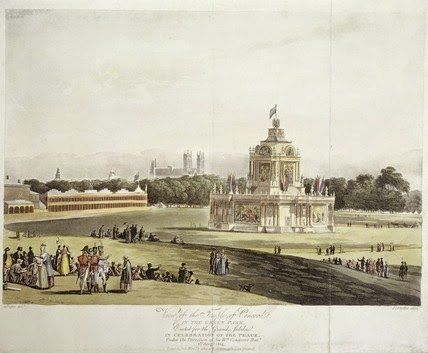 A view of the Temple of Concord, in the Green Park; erected for the Grand Jubilee in Celebration of the Peace 1814. Artist: Augustus Charles Pugin; Ackermann Print, 1814 © Museum of London
A view of the Temple of Concord, in the Green Park; erected for the Grand Jubilee in Celebration of the Peace 1814. Artist: Augustus Charles Pugin; Ackermann Print, 1814 © Museum of London
Not only were there great celebrations in London. many eager tourists flocked across the Channel to enjoy the sights of Paris after the twenty years of war with France. It needs no spoiler alert to point out that the Peace did not last until Napoleon escaped from Elba, had his Hundred Days, and lost at the Battle of Waterloo, June 18, 1815, a year later. The second time, the Allies sent him farther away, to St.Helena.
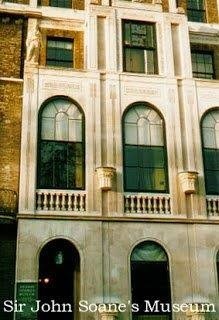
Sir John Soane's Museum, one of my favorite spot in London, is holding an exhibition, beginning June 20, 2014, on the results of that first peace in 1814.
Peace Breaks Out! London and Paris in the Summer of 181420 June - 13 September 2014Their website can be found here.
The museum describes their exhibition: "In the summer of 1814 celebrations were held in London and across Britain on the occasion of the signing of the Treaty of Paris on 30 May. The treaty saw peace return to Europe after some twenty years of conflict with the exile of the Emperor Napoleon to Elba and the restoration of the Bourbon monarchy. The various events staged across the United Kingdom were the first such nation-wide celebration to mark a significant event - such as the Treaty."
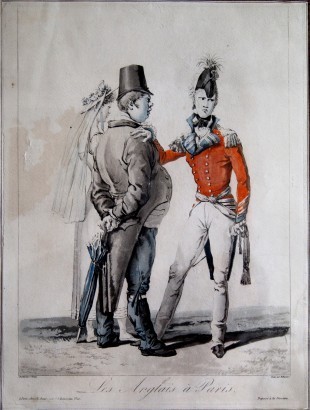
According to the museum, "The exhibition will include material from a private collection as well as material from the Soane. Soane was involved in the celebrations held for the official guests invited to London. He then travelled to Paris as soon as the peace of 1814 made such trips possible for British travellers (he made another, similar journey in 1819). As one contemporary writer put it, the summer of 1814 saw: ‘the English popping across the Channel like champagne corks released from a bottle, eager to visit a country that had been so long out of bounds…’as one author has put it. The Paris that confronted them was one of marked contrasts between the splendours of its architecture, the metropolitan pleasures that it offered and the destitution of many of its inhabitants caused by two army occupations."
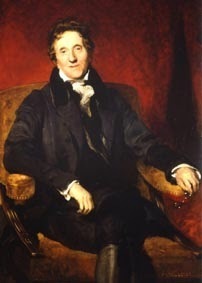 Sir John Soane by Sir Thomas Lawrence
Sir John Soane by Sir Thomas Lawrence
Here is further information from Dr Jerzy J. Kierkuć-Bieliński, Exhibitions Curator at Sir John Soane’s Museum: "The Peace of 1814 and the subsequent congress of Vienna in 1815, after the final defeat of Napoleon at Waterloo, laid the geo-political framework of the European Empires that would dominate the Continent and much of the globe up to the outbreak of the First World War. The Allies who celebrated the signing of the Treaty as guests of the Prince Regent in London, would, almost exactly one hundred years later face each on the battlefields of Europe – this time as enemies. In many ways, to understand the origins of the First World War, one has to look at the events of 1814 and the false promise of lasting peace that it offered"
I am looking forward to visiting the exhibition this summer. You can follow Sir John Soane's Museum on Facebook here.
Czar Alexander of Russia came with his sister, the Grand Duchess of Oldenburg, who was rather obstreperous to say the least.; Prussian Field Marshal Blücher and Austrian Chancellor Prince Metternich, among others came to town and were feted by the Prince Regent and many, many others.
 A view of the Temple of Concord, in the Green Park; erected for the Grand Jubilee in Celebration of the Peace 1814. Artist: Augustus Charles Pugin; Ackermann Print, 1814 © Museum of London
A view of the Temple of Concord, in the Green Park; erected for the Grand Jubilee in Celebration of the Peace 1814. Artist: Augustus Charles Pugin; Ackermann Print, 1814 © Museum of LondonNot only were there great celebrations in London. many eager tourists flocked across the Channel to enjoy the sights of Paris after the twenty years of war with France. It needs no spoiler alert to point out that the Peace did not last until Napoleon escaped from Elba, had his Hundred Days, and lost at the Battle of Waterloo, June 18, 1815, a year later. The second time, the Allies sent him farther away, to St.Helena.

Sir John Soane's Museum, one of my favorite spot in London, is holding an exhibition, beginning June 20, 2014, on the results of that first peace in 1814.
Peace Breaks Out! London and Paris in the Summer of 181420 June - 13 September 2014Their website can be found here.
The museum describes their exhibition: "In the summer of 1814 celebrations were held in London and across Britain on the occasion of the signing of the Treaty of Paris on 30 May. The treaty saw peace return to Europe after some twenty years of conflict with the exile of the Emperor Napoleon to Elba and the restoration of the Bourbon monarchy. The various events staged across the United Kingdom were the first such nation-wide celebration to mark a significant event - such as the Treaty."

According to the museum, "The exhibition will include material from a private collection as well as material from the Soane. Soane was involved in the celebrations held for the official guests invited to London. He then travelled to Paris as soon as the peace of 1814 made such trips possible for British travellers (he made another, similar journey in 1819). As one contemporary writer put it, the summer of 1814 saw: ‘the English popping across the Channel like champagne corks released from a bottle, eager to visit a country that had been so long out of bounds…’as one author has put it. The Paris that confronted them was one of marked contrasts between the splendours of its architecture, the metropolitan pleasures that it offered and the destitution of many of its inhabitants caused by two army occupations."
 Sir John Soane by Sir Thomas Lawrence
Sir John Soane by Sir Thomas LawrenceHere is further information from Dr Jerzy J. Kierkuć-Bieliński, Exhibitions Curator at Sir John Soane’s Museum: "The Peace of 1814 and the subsequent congress of Vienna in 1815, after the final defeat of Napoleon at Waterloo, laid the geo-political framework of the European Empires that would dominate the Continent and much of the globe up to the outbreak of the First World War. The Allies who celebrated the signing of the Treaty as guests of the Prince Regent in London, would, almost exactly one hundred years later face each on the battlefields of Europe – this time as enemies. In many ways, to understand the origins of the First World War, one has to look at the events of 1814 and the false promise of lasting peace that it offered"
I am looking forward to visiting the exhibition this summer. You can follow Sir John Soane's Museum on Facebook here.
Published on July 04, 2014 01:00
July 2, 2014
VIDEO WEDNESDAY
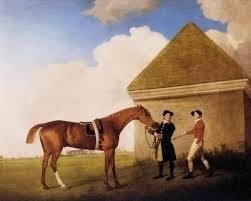
INSIDE NATURE'S GIANTS: THE HORSE
There is perhaps no creature more beautiful than the horse, nor a creature that has done so much to change the way humans live. In this episode of Inside Nature's Giants, the history and evolution of the thoroughbred horse is explored - the thoroughbred on the track, at labor and in war.
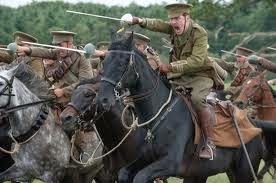
Also explored is just how the horse is able to run at such speeds and to maintain such stamina. How is the horse engineered? The physical make up of the horse is deconstructed to answer these and other questions. Did you know that a horses' hoof is actually its' finger?

If you love horses, if you write about horses, if you're awed by the beauty and power of the horse, I recommend that you watch this hour long documentary.
Warning: Graphic content - portions of this documentary depict the deconstruction of a horse for purposes of anatomical explanation. If such a thing can be termed "tasteful," this demonstration qualifies. At all times, the animal is treated with respect, and awe, by the veterinary surgeons, anatomists and pathologists performing the operation.
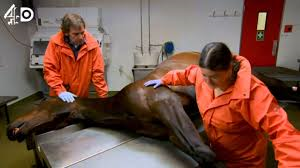
You can watch the video here.
Published on July 02, 2014 00:00
June 30, 2014
THE LONDON SEASON
Victoria here. Long-time followers of this blog (we love you!) might recall an early post on Horace Walpole and his invention of the word SERENDIPITY. Here it is again, if you are so inclined.
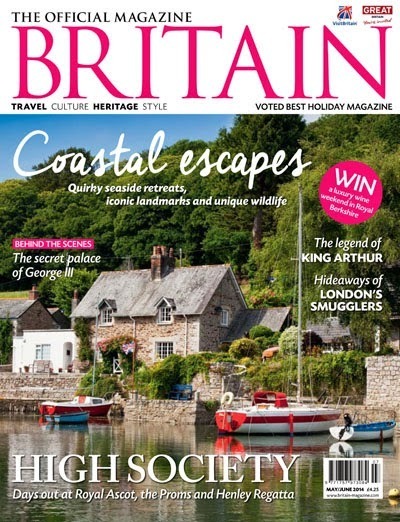
I have had occasion lately to study up on the London Season, as it is portrayed in accounts of the Georgian and Victorian eras, perhaps even before and after those several centuries. When I finally got around to reading recent issues of Britain: The Official Magazine of Visit Britain, and British Heritage, two of my favorite publications, I found articles on The London Season. Serendipity again!
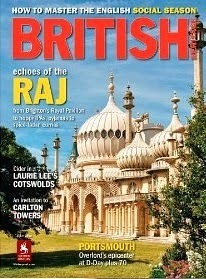
Britain (click here for their website), in an article by Josephine Price, writes "...the aristocracy and members of the ruling classes tended to reside in London at the same time as the Royal Family. The summer season from April to July was peak time to be in London as it was before the start of shooting season...so a programme of social events was established in the 18th century to keep everyone entertained".
 Lady Blades, Court Presentation Regalia, 1927; Lafayette Photo Studio
Lady Blades, Court Presentation Regalia, 1927; Lafayette Photo Studio
Today of course, the once-essential debutante balls and presentation to the monarch is no longer an official part of the Season, though debutante balls can still be found. Perhaps even more so as new residents try to revive old traditions.
 2013 Debutante Ball at Royal Courts of Justice, Daily Mail
2013 Debutante Ball at Royal Courts of Justice, Daily Mail
However, many old traditions are as lively as ever, many associated with sports, such as the races at Royal Ascot and Goodwood, Wimbledon Tennis, Gold Cup Polo, and yachting at Cowes. .
 \Royal ascot, 2013, Britain
\Royal ascot, 2013, Britain
Other popular cultural events take place during the Season, such as the BBC Proms at Royal Albert Hall. The article in British Heritage, by Sandra Lawrence, adds Opera at Glyndebourne, the Royal Academy Summer exhibition of paintings, the Chelsea Flower Show and the Hay-on-Wye Literature Festival, among other events.
 Royal Albert Hall, Britain
Royal Albert Hall, Britain
As a fan of Georgette Heyer and other authors who plumb the depths of our knowledge of the Regency period, and as a write who has penned a few Regencies of her own, I have followed the many discussions on various internet forums of the precise dates, activities, persons, and events that constitute the Season, with a capital S, in London in the spring and early summer, exact dates up for discussion, but mostly based on the meetings of Parliament.
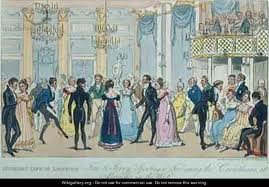 Highest Life in London: Tom and Jerry 'Sporting a Toe' among the Corinthians at Almacks in the West, from 'Life in London' by Pierce Egan, 1821
Highest Life in London: Tom and Jerry 'Sporting a Toe' among the Corinthians at Almacks in the West, from 'Life in London' by Pierce Egan, 1821
According to popular lore, the Season -- and for that matter, many of the other social activities of the gentry and aristocracy back in the day -- had to do with introducing young ladies and gentlemen to one another in the hopes of making effective matches -- or what is often called The Marriage Mart.
The most fortunate of the young ladies would be presented to the King and/or Queen at a Royal Drawing Room. Balls, Assemblies, Concerts, and many other events went on until the "first families" left the hot and smelly city to return to their country seats for harvest, the shooting seasons, fox hunting, and so forth until Christmas. And by Easter, it would begin all over once more.
 Downton Abbey; Rose is Presented
Downton Abbey; Rose is Presented
How the world has changed. We might look on the old ways, perhaps as represented in Downton Abbey, as very appealing. However, they were reserved for only a special few. Today, most of the activities named are public and limited only by your ability to pay for your participation. But if magazine pictures of the fashionable hats and swanky dresses of the current day's participants is any measure of the feminine effort to charm, the Season still has some of the trappings of the Marriage Mart -- just a few!
 Beautiful Chapeau
Beautiful Chapeau
.

I have had occasion lately to study up on the London Season, as it is portrayed in accounts of the Georgian and Victorian eras, perhaps even before and after those several centuries. When I finally got around to reading recent issues of Britain: The Official Magazine of Visit Britain, and British Heritage, two of my favorite publications, I found articles on The London Season. Serendipity again!

Britain (click here for their website), in an article by Josephine Price, writes "...the aristocracy and members of the ruling classes tended to reside in London at the same time as the Royal Family. The summer season from April to July was peak time to be in London as it was before the start of shooting season...so a programme of social events was established in the 18th century to keep everyone entertained".
 Lady Blades, Court Presentation Regalia, 1927; Lafayette Photo Studio
Lady Blades, Court Presentation Regalia, 1927; Lafayette Photo StudioToday of course, the once-essential debutante balls and presentation to the monarch is no longer an official part of the Season, though debutante balls can still be found. Perhaps even more so as new residents try to revive old traditions.
 2013 Debutante Ball at Royal Courts of Justice, Daily Mail
2013 Debutante Ball at Royal Courts of Justice, Daily MailHowever, many old traditions are as lively as ever, many associated with sports, such as the races at Royal Ascot and Goodwood, Wimbledon Tennis, Gold Cup Polo, and yachting at Cowes. .
 \Royal ascot, 2013, Britain
\Royal ascot, 2013, BritainOther popular cultural events take place during the Season, such as the BBC Proms at Royal Albert Hall. The article in British Heritage, by Sandra Lawrence, adds Opera at Glyndebourne, the Royal Academy Summer exhibition of paintings, the Chelsea Flower Show and the Hay-on-Wye Literature Festival, among other events.
 Royal Albert Hall, Britain
Royal Albert Hall, BritainAs a fan of Georgette Heyer and other authors who plumb the depths of our knowledge of the Regency period, and as a write who has penned a few Regencies of her own, I have followed the many discussions on various internet forums of the precise dates, activities, persons, and events that constitute the Season, with a capital S, in London in the spring and early summer, exact dates up for discussion, but mostly based on the meetings of Parliament.
 Highest Life in London: Tom and Jerry 'Sporting a Toe' among the Corinthians at Almacks in the West, from 'Life in London' by Pierce Egan, 1821
Highest Life in London: Tom and Jerry 'Sporting a Toe' among the Corinthians at Almacks in the West, from 'Life in London' by Pierce Egan, 1821 According to popular lore, the Season -- and for that matter, many of the other social activities of the gentry and aristocracy back in the day -- had to do with introducing young ladies and gentlemen to one another in the hopes of making effective matches -- or what is often called The Marriage Mart.
The most fortunate of the young ladies would be presented to the King and/or Queen at a Royal Drawing Room. Balls, Assemblies, Concerts, and many other events went on until the "first families" left the hot and smelly city to return to their country seats for harvest, the shooting seasons, fox hunting, and so forth until Christmas. And by Easter, it would begin all over once more.
 Downton Abbey; Rose is Presented
Downton Abbey; Rose is PresentedHow the world has changed. We might look on the old ways, perhaps as represented in Downton Abbey, as very appealing. However, they were reserved for only a special few. Today, most of the activities named are public and limited only by your ability to pay for your participation. But if magazine pictures of the fashionable hats and swanky dresses of the current day's participants is any measure of the feminine effort to charm, the Season still has some of the trappings of the Marriage Mart -- just a few!
 Beautiful Chapeau
Beautiful Chapeau .
Published on June 30, 2014 00:30
June 27, 2014
CONFESSIONS OF A SERIAL TRAVELER
Victoria here. I love to travel. Any place, anytime. As long as it starts or ends in London.
 Big Ben
Big Ben
 Buckingham Palace Gate I travel for fun, to study history and biographies of famous people, to sort out the eccentricities of the natives and the visitors alike, and -- I admit it -- to peruse the gift shops wherever I go. Ordinarily I am not a very good shopper. To me, most shopping is in the ERRAND category, to be dispensed with quickly and with a minimum of fuss. BUT! Not so when I am in a museum...or a stately home...or a cathedral...or a palace...or in Liberty of London.
Buckingham Palace Gate I travel for fun, to study history and biographies of famous people, to sort out the eccentricities of the natives and the visitors alike, and -- I admit it -- to peruse the gift shops wherever I go. Ordinarily I am not a very good shopper. To me, most shopping is in the ERRAND category, to be dispensed with quickly and with a minimum of fuss. BUT! Not so when I am in a museum...or a stately home...or a cathedral...or a palace...or in Liberty of London.
 Liberty Exterior
Liberty Exterior
 Interior, Liberty, Regent Street
Interior, Liberty, Regent Street
 Trying for a shot of Apsley HouseI love to take lots of pictures, abetted by the wonders of the digital camera, with which you can delete any picture you don't like immediately and try it again. Snap, snap, snap. Of course, my husband tells me I have way too many pictures and that I will soon fill up my hard disk, but I can't wait to be at it again. He especially laughs at all the flower and garden pictures I take. A rose is a rose is a rose, he says. But I know that one rose comes from Cadogan Square.
Trying for a shot of Apsley HouseI love to take lots of pictures, abetted by the wonders of the digital camera, with which you can delete any picture you don't like immediately and try it again. Snap, snap, snap. Of course, my husband tells me I have way too many pictures and that I will soon fill up my hard disk, but I can't wait to be at it again. He especially laughs at all the flower and garden pictures I take. A rose is a rose is a rose, he says. But I know that one rose comes from Cadogan Square.
 Cadogan SquareOr from the heart of Bloomsbury:
Cadogan SquareOr from the heart of Bloomsbury:
 Gordon SquareOr from Windsor Castle.
Gordon SquareOr from Windsor Castle.
 Garden at Windsor Castle Another one comes from Hatfield House! No two are the same.
Garden at Windsor Castle Another one comes from Hatfield House! No two are the same.
 The Old Palace, HatfieldAnother favorite of mine is wisteria. I can't resist grabbing the camera and shooting away when I encounter those dripping purple blossoms.
The Old Palace, HatfieldAnother favorite of mine is wisteria. I can't resist grabbing the camera and shooting away when I encounter those dripping purple blossoms.
 \Old Palace, HatfieldAnd did I mention how much I love to browse in the gift shops? We all know that every one of those items is probably available on line -- and if I ordered it, I wouldn't have to crowd my suitcase with new possessions. But I am helpless in the face of that sign: This Way to the Gift Shop.
\Old Palace, HatfieldAnd did I mention how much I love to browse in the gift shops? We all know that every one of those items is probably available on line -- and if I ordered it, I wouldn't have to crowd my suitcase with new possessions. But I am helpless in the face of that sign: This Way to the Gift Shop.
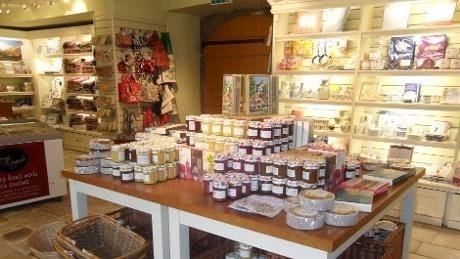 I love to visit in the winter...
I love to visit in the winter...
 Eastwell Manor, Kent...spring
Eastwell Manor, Kent...spring
 bluebells and rhododendrons at Bowood, Wiltshire...summer
bluebells and rhododendrons at Bowood, Wiltshire...summer
 Old Palace at Hatfield House...and autumn
Old Palace at Hatfield House...and autumn

Sheffield Park, East Sussex I love to visit castles Bodiam Castle, Sussex...Palaces
Bodiam Castle, Sussex...Palaces
 Blenheim Palace, Oxfordshire ...Stately Homes
Blenheim Palace, Oxfordshire ...Stately Homes
 Bowood, Wiltshire ...Cottages
Bowood, Wiltshire ...Cottages
 ...Villages
...Villages
 Lower Slaughter, Gloucestershire...Towns
Lower Slaughter, Gloucestershire...Towns
 Chippingham, Wiltshire ...Cities
Chippingham, Wiltshire ...Cities
 British Library, St. Pancras Station and Hotel, London...Roman Sites
British Library, St. Pancras Station and Hotel, London...Roman Sites
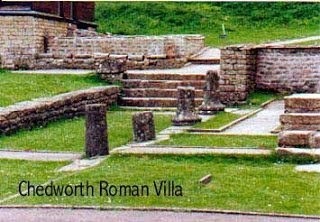 Chedworth Roman Villa...Medieval sites
Chedworth Roman Villa...Medieval sites
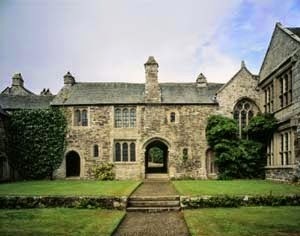 Cothele, Cornwall ...Tudor sites
Cothele, Cornwall ...Tudor sites
 Hampton Court Palace...Georgian sites
Hampton Court Palace...Georgian sites
 Kew Palace...Regency Sites
Kew Palace...Regency Sites
 Brighton Pavilion...Victorian Sites
Brighton Pavilion...Victorian Sites
 Highclere Castle...Small Museums
Highclere Castle...Small Museums
 The Salisbury Museum, Wiltshire ...Huge Museums
The Salisbury Museum, Wiltshire ...Huge Museums
 The British Museum ...Art Galleries
The British Museum ...Art Galleries
 The Wallace Collection, Manchester SquareAnd did I mention gift shops?
The Wallace Collection, Manchester SquareAnd did I mention gift shops?
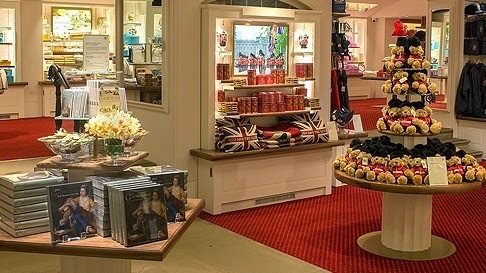 Of course, I also love the food.
Of course, I also love the food.
 Fish n' Chips...The Ubiquitous Full English Breakfast
Fish n' Chips...The Ubiquitous Full English Breakfast
 Well, at least a little of it!...Sunday Roast
Well, at least a little of it!...Sunday Roast
 with Yorkshire pudding and veg...Tea in all varieties
with Yorkshire pudding and veg...Tea in all varieties
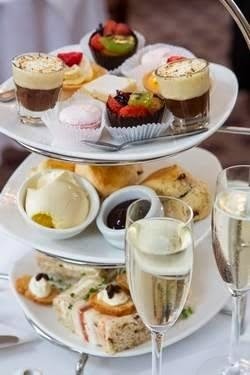 Pump Room Champagne Tea, Bath...and the ultimate in shopping for the gourmets and gourmands among us, Fortnum and Mason.
Pump Room Champagne Tea, Bath...and the ultimate in shopping for the gourmets and gourmands among us, Fortnum and Mason.
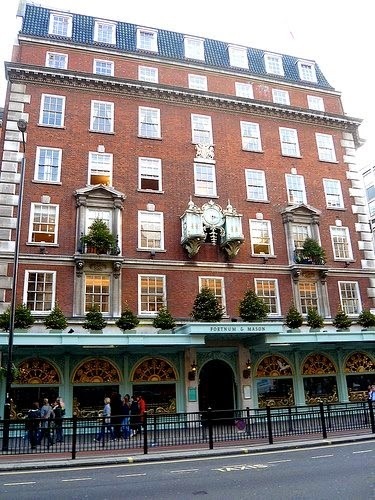 Fortnum and Mason, Piccadilly
Fortnum and Mason, Piccadilly
 Fortnum and Mason Window
Fortnum and Mason Window
Best of all: Bookstores!
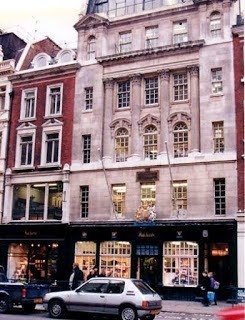 Hatchards, Piccadilly
Hatchards, Piccadilly
Sorry, I can't add more now --- too busy browsing the shelves! See you in England!!Hugs, VictoriaJOIN THE DUKE OF WELLINGTON TOUR SEPTEMBER 4-14, 2014
CLICK HERE FOR MORE INFORMATION.
 Big Ben
Big Ben
 Buckingham Palace Gate I travel for fun, to study history and biographies of famous people, to sort out the eccentricities of the natives and the visitors alike, and -- I admit it -- to peruse the gift shops wherever I go. Ordinarily I am not a very good shopper. To me, most shopping is in the ERRAND category, to be dispensed with quickly and with a minimum of fuss. BUT! Not so when I am in a museum...or a stately home...or a cathedral...or a palace...or in Liberty of London.
Buckingham Palace Gate I travel for fun, to study history and biographies of famous people, to sort out the eccentricities of the natives and the visitors alike, and -- I admit it -- to peruse the gift shops wherever I go. Ordinarily I am not a very good shopper. To me, most shopping is in the ERRAND category, to be dispensed with quickly and with a minimum of fuss. BUT! Not so when I am in a museum...or a stately home...or a cathedral...or a palace...or in Liberty of London.
 Liberty Exterior
Liberty Exterior
 Interior, Liberty, Regent Street
Interior, Liberty, Regent Street
 Trying for a shot of Apsley HouseI love to take lots of pictures, abetted by the wonders of the digital camera, with which you can delete any picture you don't like immediately and try it again. Snap, snap, snap. Of course, my husband tells me I have way too many pictures and that I will soon fill up my hard disk, but I can't wait to be at it again. He especially laughs at all the flower and garden pictures I take. A rose is a rose is a rose, he says. But I know that one rose comes from Cadogan Square.
Trying for a shot of Apsley HouseI love to take lots of pictures, abetted by the wonders of the digital camera, with which you can delete any picture you don't like immediately and try it again. Snap, snap, snap. Of course, my husband tells me I have way too many pictures and that I will soon fill up my hard disk, but I can't wait to be at it again. He especially laughs at all the flower and garden pictures I take. A rose is a rose is a rose, he says. But I know that one rose comes from Cadogan Square.
 Cadogan SquareOr from the heart of Bloomsbury:
Cadogan SquareOr from the heart of Bloomsbury:
 Gordon SquareOr from Windsor Castle.
Gordon SquareOr from Windsor Castle.
 Garden at Windsor Castle Another one comes from Hatfield House! No two are the same.
Garden at Windsor Castle Another one comes from Hatfield House! No two are the same.
 The Old Palace, HatfieldAnother favorite of mine is wisteria. I can't resist grabbing the camera and shooting away when I encounter those dripping purple blossoms.
The Old Palace, HatfieldAnother favorite of mine is wisteria. I can't resist grabbing the camera and shooting away when I encounter those dripping purple blossoms.
 \Old Palace, HatfieldAnd did I mention how much I love to browse in the gift shops? We all know that every one of those items is probably available on line -- and if I ordered it, I wouldn't have to crowd my suitcase with new possessions. But I am helpless in the face of that sign: This Way to the Gift Shop.
\Old Palace, HatfieldAnd did I mention how much I love to browse in the gift shops? We all know that every one of those items is probably available on line -- and if I ordered it, I wouldn't have to crowd my suitcase with new possessions. But I am helpless in the face of that sign: This Way to the Gift Shop.
 I love to visit in the winter...
I love to visit in the winter...
 Eastwell Manor, Kent...spring
Eastwell Manor, Kent...spring
 bluebells and rhododendrons at Bowood, Wiltshire...summer
bluebells and rhododendrons at Bowood, Wiltshire...summer
 Old Palace at Hatfield House...and autumn
Old Palace at Hatfield House...and autumn

Sheffield Park, East Sussex I love to visit castles
 Bodiam Castle, Sussex...Palaces
Bodiam Castle, Sussex...Palaces
 Blenheim Palace, Oxfordshire ...Stately Homes
Blenheim Palace, Oxfordshire ...Stately Homes
 Bowood, Wiltshire ...Cottages
Bowood, Wiltshire ...Cottages
 ...Villages
...Villages
 Lower Slaughter, Gloucestershire...Towns
Lower Slaughter, Gloucestershire...Towns
 Chippingham, Wiltshire ...Cities
Chippingham, Wiltshire ...Cities
 British Library, St. Pancras Station and Hotel, London...Roman Sites
British Library, St. Pancras Station and Hotel, London...Roman Sites
 Chedworth Roman Villa...Medieval sites
Chedworth Roman Villa...Medieval sites
 Cothele, Cornwall ...Tudor sites
Cothele, Cornwall ...Tudor sites
 Hampton Court Palace...Georgian sites
Hampton Court Palace...Georgian sites
 Kew Palace...Regency Sites
Kew Palace...Regency Sites
 Brighton Pavilion...Victorian Sites
Brighton Pavilion...Victorian Sites
 Highclere Castle...Small Museums
Highclere Castle...Small Museums
 The Salisbury Museum, Wiltshire ...Huge Museums
The Salisbury Museum, Wiltshire ...Huge Museums
 The British Museum ...Art Galleries
The British Museum ...Art Galleries
 The Wallace Collection, Manchester SquareAnd did I mention gift shops?
The Wallace Collection, Manchester SquareAnd did I mention gift shops?
 Of course, I also love the food.
Of course, I also love the food.
 Fish n' Chips...The Ubiquitous Full English Breakfast
Fish n' Chips...The Ubiquitous Full English Breakfast
 Well, at least a little of it!...Sunday Roast
Well, at least a little of it!...Sunday Roast
 with Yorkshire pudding and veg...Tea in all varieties
with Yorkshire pudding and veg...Tea in all varieties
 Pump Room Champagne Tea, Bath...and the ultimate in shopping for the gourmets and gourmands among us, Fortnum and Mason.
Pump Room Champagne Tea, Bath...and the ultimate in shopping for the gourmets and gourmands among us, Fortnum and Mason. Fortnum and Mason, Piccadilly
Fortnum and Mason, Piccadilly Fortnum and Mason Window
Fortnum and Mason WindowBest of all: Bookstores!
 Hatchards, Piccadilly
Hatchards, PiccadillySorry, I can't add more now --- too busy browsing the shelves! See you in England!!Hugs, VictoriaJOIN THE DUKE OF WELLINGTON TOUR SEPTEMBER 4-14, 2014
CLICK HERE FOR MORE INFORMATION.
Published on June 27, 2014 00:30
June 25, 2014
VIDEO WEDNESDAY - THE ARISTOCRACY
Letting in the Hoi Polloi: 1945-1970
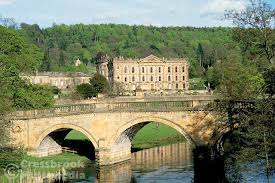
During World War II, great country houses doubled as army barracks and hospitals. After the war, their owners faced mammoth repair bills and a new Labour Government, which seemed prepared to tax them out of existence. In order to gain National Trust grants, a number of aristocrats opened their doors to the public. The peers who once ruled England now wooed the masses. With interviews and archival footage, Letting in the Hoi Polloi chronicles the days when the Duke of Devonshire hosted a television tour of his home, Lord Hertford water-skied through flaming hoops to attract tourists to his estate, and over 400 ancestral homes fell to the wrecking ball. The tumbling of class barriers during the 1960s is also recalled by Lord Lichfield, who became photographer to the new aristocrats--pop stars, models, and sports heroes.
Part One
Part Two
Part Three

During World War II, great country houses doubled as army barracks and hospitals. After the war, their owners faced mammoth repair bills and a new Labour Government, which seemed prepared to tax them out of existence. In order to gain National Trust grants, a number of aristocrats opened their doors to the public. The peers who once ruled England now wooed the masses. With interviews and archival footage, Letting in the Hoi Polloi chronicles the days when the Duke of Devonshire hosted a television tour of his home, Lord Hertford water-skied through flaming hoops to attract tourists to his estate, and over 400 ancestral homes fell to the wrecking ball. The tumbling of class barriers during the 1960s is also recalled by Lord Lichfield, who became photographer to the new aristocrats--pop stars, models, and sports heroes.
Part One
Part Two
Part Three
Published on June 25, 2014 00:00
June 23, 2014
A NEW VISION FOR PITZHANGER MANOR BY GUEST BLOGGER JO MANNING
Welcome back to our pal, Jo Manning, who reports frequently on her adventures in England and elsewhere.
PITZHANGER MANOR, SIR JOHN SOANE’S COUNTRY HOUSE (AND GARDENS) IN WALPOLE PARK, EALING, WEST LONDON, A GRADE I LISTED BUILDING, IS ABOUT TO UNDERGO A LONG-AWAITED MAJOR RESTORATION
by Jo Manning
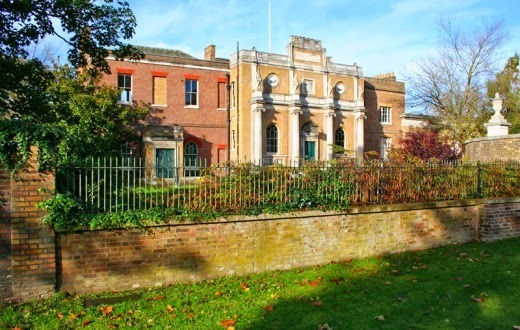 Pitzhanger Manor, front view and gallery from Ealing High Street, today (the art gallery is off to the right side)
Pitzhanger Manor, front view and gallery from Ealing High Street, today (the art gallery is off to the right side)
 Proposed restoration to front and to art gallery
Proposed restoration to front and to art gallery
In the opening years of the 19th century, Sir John Soane (1769-1830) decided to build a country house for his family just outside of London proper. In 1800 he located a site in Acton, but soon abandoned it for an existing property in Ealing. His friend, mentor, and former teacher, the architect George Dance the Younger, assisted him in the demolition of part of the property and in redesigning what was the largest part of what was an existing house to Soane's exacting taste. The collaboration produced a charming home and lovely gardens in Ealing, an area of West London now completely different from the open fields that existed when the home was completed in 1804 and this area was very much more rural and accessible only by walking, stagecoach routes and private horse-and-carriage transportation from London.
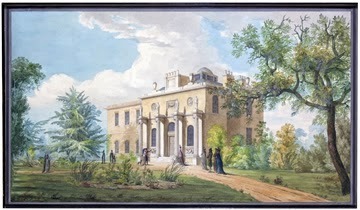 Pitzhanger Manor circa 1804
Pitzhanger Manor circa 1804
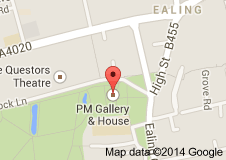 Pitzhanger Manor is just south of the busy shopping area on the Ealing High Street…
Pitzhanger Manor is just south of the busy shopping area on the Ealing High Street…
The location is accessible by bus, tube, and rail.
Relatively few people will have heard of Pitzhanger (sometimes spelled Pitshanger) Manor, and fewer still would connect it with the great Georgian architect. Sir John Soane (1753-1837), is more widely known to most of us for the museum in his name in Lincoln’s Inn Fields, comprising his original family home(s) Numbers 12-13 (built in 1792), and the adjoining Number 14 (also designed by Soane, it was purchased in 1996 by the British government to house more of his voluminous private art collection).
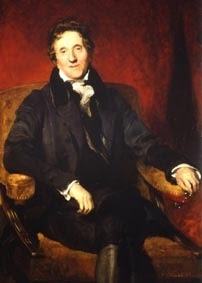 Sir John Soane by artist Sir Thomas Lawrence
Sir John Soane by artist Sir Thomas Lawrence
Sir John Soane could not have been more prominent in his time. He was the Architect to the Bank of England; Surveyor to the Royal Hospital at Chelsea; Grand Superintendent of Works for the Freemasons; and responsible for the interiors of Numbers 10 and 11 Downing Street as well as the Law Courts at Westminster.
Soane designed a number of new buildings adjacent to Sir Christopher Wren’s Royal Hospital at Chelsea. One of them, the Infirmary, was destroyed in WWII; the Stables (which are private but can be seen from Royal Hospital Road) is also his work and has been called “the most quintessentially Soanic” of all Soane’s exteriors; he also designed the Secretary’s Office of the Royal Hospital complex, which now houses the Museum (open to the public).
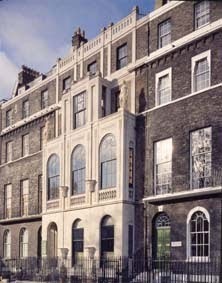 Sir John Soane’s Museum at Lincoln’s Inn Fields
Sir John Soane’s Museum at Lincoln’s Inn Fields
Soane’s residence in Lincoln’s Inn Fields was more than a private home; it was built to hold much of his art collection, which included architectural drawings, paintings, sculpture, architectural models, and his many and diverse artifacts (including the sarcophagus of Pharoah Seti I, excavated in Egypt’s Valley of the Kings in 1817; the British Library passed on buying it, so Soane bought it!)
As the architect for the Bank of England and its offices, an undertaking that occupied him for at least 45 years, of particular note was the Bank Stock Office, considered, in 1793, to be “daringly unconventional.” He also designed the Dulwich Picture Gallery, recently described by The Sunday Telegraph as “the most beautiful art gallery in the world”. It was the first public picture gallery in England and is said to have influenced a number of galleries that came after. (It is often remarked that the museum’s collection stands a far distant second to the magnificent design of the gallery itself.)
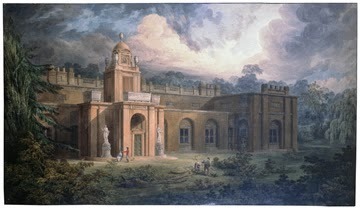 The Dulwich Picture Gallery
The Dulwich Picture Gallery
St John’s Church, Bethnal Green; St Mary Abbots Church, Kensington; St Nicholas’ Church, Chiswick; Holy Trinity Church, Marylebone; and St Peter’s Church, Walworth, are all fine examples of his church design. Of them all, the latter, St Peter’s, is the best preserved. (The fine interior of the church, however, can be viewed only by attending church services; grounds are open during daylight hours.)
 Soane Family Tomb
Soane Family Tomb
Soane also designed his own tomb. Ostensibly designed for his wife, who passed away in 1815, he shares her eternal rest along with their son John. It is in the churchyard of Old Saint Pancras Gardens, Pancras Road, Somers Town (not to be confused with Saint Pancras New Church, in nearby Euston, designed by the Inwood brothers). Trivia check #1: Old Saint Pancras is the church where my biographical subject, Grace Dalrymple Elliott, was married. Trivia check #2: The tomb is one of only two Grade I listed tombs in London (Karl Marx’s is the other one), and many think it inspired Giles Gilbert Scott’s red telephone box of the 1920s.

There are three tombstones: one for Soane’s wife, another for Soane, and the last for his son John (seen above), who predeceased him at the age of 37…
Back to Pitzhanger Manor’s happily anticipated restoration/renovation…
 Back view, today, of the manor house, with an eye to the gardens…
Back view, today, of the manor house, with an eye to the gardens…
 Proposed view from the inner park to the rear of the manor house, showing new landscaping and the glass conservatory…
Proposed view from the inner park to the rear of the manor house, showing new landscaping and the glass conservatory…
 Here’s the view of the new fish pond, looking out of the rear windows of the house…
Here’s the view of the new fish pond, looking out of the rear windows of the house…
Following the completion of the manor house, Sir John Soane was only to use it as a weekend retreat and a place of entertainment/dinner parties until he sold it only five years later in 1810. Five years…such a short time for such an outpouring of energy and talent in the design of this building!
In 1843 it became home to the daughters of Britain's only assassinated Prime Minister, Spencer Perceval. (A bust of Perceval is on the second floor landing of the house, and that is an interesting story, this assassination…look it up!) In 1901, the building was sold to Ealing District Council and extended to become a public library; in 1985 it was converted into a museum.

Proposed view of Belvedere in the new plan…
Here is the government legalese regarding the application for renovation and its outcome:
Ealing Council’s planning committee approved an application which included renovation work to the manor in Walpole Park, Mattock Lane, Ealing, when it met on February 19. This includes the construction of a new café in the walled garden with improved pedestrian access from Ealing Green to the café, a conservatory extension at the back of the manor, installation of a roof lantern, and updated visitor facilities for the former library building which was converted into a gallery in the 1980s. The Government’s National Planning Casework Unit will now have the final say on the Listed Building Consent approval.

Proposed view of the “Rick Yard” (Education Centre) in new plan…
In April 2012 PM was awarded a first-round development grant of £275,000 from the Heritage Lottery Fund (HLF) to develop the restoration plans and now a round-two bid of £4.42 million has been submitted. This is alongside a bid which has been sent to Arts Council England for just under £500,000 for works to the gallery. Ealing Council has also agreed in principle to allow the Pitzhanger Manor Trust (PMT)- a registered charity- to take over management and operation of the house and gallery. Furthermore, £425,000 has been awarded from several charitable trusts and foundations which fund heritage and arts projects, which are subject to the success of the second round bid from HLF
Leader of Ealing Council and member of the PMT, Councillor Julian Bell, said: “We are making excellent progress towards the restoration of one of the borough’s most iconic landmarks and a fantastic cultural asset.”
Chair of PMT, Sir Sherard Cowper-Coles, said: “We are looking forward to the time when we take responsibility for Pitzhanger Manor Gallery, the new café and community facilities, all within the wonderfully restored Walpole Park. “I have no doubt that once completed it will be the jewel in the crown of the queen of the suburbs.” ***
More funding is still required to enable the total cost of the project to be met. Subject to further planning permission and all of the funding being approved, work on PM is due to start in early 2015.
 Jestico and Whiles site plan…
Jestico and Whiles site plan…
For more on how this site is being developed by Jestico & Whiles, the architect Julian Harrap and others, see: http://www.jesticowhiles.com/project-info.php?p=2480
 Julian Harrap rendering of Pitzhanger Manor
Julian Harrap rendering of Pitzhanger Manor
As of May 2014, work had already begun on the re-landscaping of the grounds surrounding Pitzhanger Manor. Although access to the landscaping area is strictly restricted, the manor house and art gallery are still accessible to visitors. Admission is free, and the interior of the manor house – which was renovated only a few years ago – is lovely. What more will be done to these rooms – if anything – will be revealed in 2015. Here are photos of the gorgeous interiors.

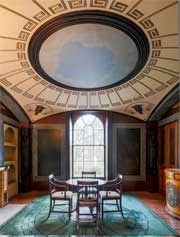

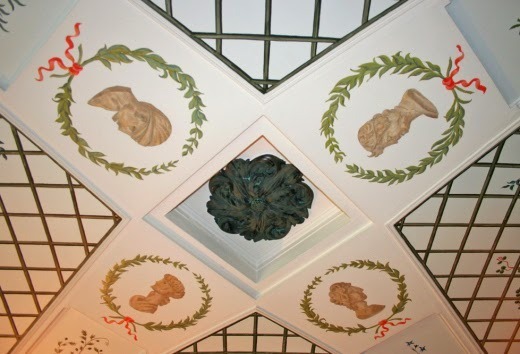
And note this lovely painted ceiling (from the image above)
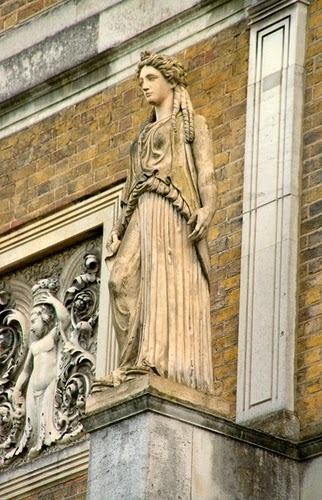
One of the four caryatids atop the columns of the east front of Pitzhanger Manor . Made of Coade stone, they are thought to be modeled on the caryatids that enclose the sanctuary of Pandrosus in Athens…
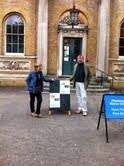 Jo and Nick Manning, Pitzhanger Manor, May 2014
Jo and Nick Manning, Pitzhanger Manor, May 2014
In early May 2014, my husband and I went to an exhibit at the Pitzhanger Art Gallery. The speaker was an expert on Le Corbusier and his massive photographs of Corbu’s work adorned the walls of the gallery space. It was an excellent, well-publicized exhibit that drew many participants. The gallery is an important venue for this Ealing community, which has – alas! -- a dearth of such cultural places. The renovated house and grounds of Pitzhanger Manor will bring in many more tourists and visitors, who will, finally, honor the great architect and designer Sir John Soane in the way he should be honored. It will also be a tremendous resource for young people studying the arts. What a coup for Ealing! Bravo to the Ealing Council and the people of Ealing for their successful efforts in bringing this about.
***Ealing has long been called The Queen Of The Suburbs…
Post Script…
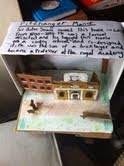
The text, written by 8-yeqr-old Lily Winterbotham, reads: “Pitzhanger Manor … Sir John Soane owned this house in Ealing from 1800-1810. He was a famous architect and he bought this house as a contry [sic]retreat, and re-designed it. He was the son of a bricklayer and became a Professer [sic] at the Royal Academy.”
PITZHANGER MANOR, SIR JOHN SOANE’S COUNTRY HOUSE (AND GARDENS) IN WALPOLE PARK, EALING, WEST LONDON, A GRADE I LISTED BUILDING, IS ABOUT TO UNDERGO A LONG-AWAITED MAJOR RESTORATION
by Jo Manning
 Pitzhanger Manor, front view and gallery from Ealing High Street, today (the art gallery is off to the right side)
Pitzhanger Manor, front view and gallery from Ealing High Street, today (the art gallery is off to the right side)
 Proposed restoration to front and to art gallery
Proposed restoration to front and to art galleryIn the opening years of the 19th century, Sir John Soane (1769-1830) decided to build a country house for his family just outside of London proper. In 1800 he located a site in Acton, but soon abandoned it for an existing property in Ealing. His friend, mentor, and former teacher, the architect George Dance the Younger, assisted him in the demolition of part of the property and in redesigning what was the largest part of what was an existing house to Soane's exacting taste. The collaboration produced a charming home and lovely gardens in Ealing, an area of West London now completely different from the open fields that existed when the home was completed in 1804 and this area was very much more rural and accessible only by walking, stagecoach routes and private horse-and-carriage transportation from London.
 Pitzhanger Manor circa 1804
Pitzhanger Manor circa 1804 Pitzhanger Manor is just south of the busy shopping area on the Ealing High Street…
Pitzhanger Manor is just south of the busy shopping area on the Ealing High Street… The location is accessible by bus, tube, and rail.
Relatively few people will have heard of Pitzhanger (sometimes spelled Pitshanger) Manor, and fewer still would connect it with the great Georgian architect. Sir John Soane (1753-1837), is more widely known to most of us for the museum in his name in Lincoln’s Inn Fields, comprising his original family home(s) Numbers 12-13 (built in 1792), and the adjoining Number 14 (also designed by Soane, it was purchased in 1996 by the British government to house more of his voluminous private art collection).
 Sir John Soane by artist Sir Thomas Lawrence
Sir John Soane by artist Sir Thomas LawrenceSir John Soane could not have been more prominent in his time. He was the Architect to the Bank of England; Surveyor to the Royal Hospital at Chelsea; Grand Superintendent of Works for the Freemasons; and responsible for the interiors of Numbers 10 and 11 Downing Street as well as the Law Courts at Westminster.
Soane designed a number of new buildings adjacent to Sir Christopher Wren’s Royal Hospital at Chelsea. One of them, the Infirmary, was destroyed in WWII; the Stables (which are private but can be seen from Royal Hospital Road) is also his work and has been called “the most quintessentially Soanic” of all Soane’s exteriors; he also designed the Secretary’s Office of the Royal Hospital complex, which now houses the Museum (open to the public).
 Sir John Soane’s Museum at Lincoln’s Inn Fields
Sir John Soane’s Museum at Lincoln’s Inn FieldsSoane’s residence in Lincoln’s Inn Fields was more than a private home; it was built to hold much of his art collection, which included architectural drawings, paintings, sculpture, architectural models, and his many and diverse artifacts (including the sarcophagus of Pharoah Seti I, excavated in Egypt’s Valley of the Kings in 1817; the British Library passed on buying it, so Soane bought it!)
As the architect for the Bank of England and its offices, an undertaking that occupied him for at least 45 years, of particular note was the Bank Stock Office, considered, in 1793, to be “daringly unconventional.” He also designed the Dulwich Picture Gallery, recently described by The Sunday Telegraph as “the most beautiful art gallery in the world”. It was the first public picture gallery in England and is said to have influenced a number of galleries that came after. (It is often remarked that the museum’s collection stands a far distant second to the magnificent design of the gallery itself.)
 The Dulwich Picture Gallery
The Dulwich Picture GallerySt John’s Church, Bethnal Green; St Mary Abbots Church, Kensington; St Nicholas’ Church, Chiswick; Holy Trinity Church, Marylebone; and St Peter’s Church, Walworth, are all fine examples of his church design. Of them all, the latter, St Peter’s, is the best preserved. (The fine interior of the church, however, can be viewed only by attending church services; grounds are open during daylight hours.)
 Soane Family Tomb
Soane Family TombSoane also designed his own tomb. Ostensibly designed for his wife, who passed away in 1815, he shares her eternal rest along with their son John. It is in the churchyard of Old Saint Pancras Gardens, Pancras Road, Somers Town (not to be confused with Saint Pancras New Church, in nearby Euston, designed by the Inwood brothers). Trivia check #1: Old Saint Pancras is the church where my biographical subject, Grace Dalrymple Elliott, was married. Trivia check #2: The tomb is one of only two Grade I listed tombs in London (Karl Marx’s is the other one), and many think it inspired Giles Gilbert Scott’s red telephone box of the 1920s.

There are three tombstones: one for Soane’s wife, another for Soane, and the last for his son John (seen above), who predeceased him at the age of 37…
Back to Pitzhanger Manor’s happily anticipated restoration/renovation…
 Back view, today, of the manor house, with an eye to the gardens…
Back view, today, of the manor house, with an eye to the gardens… Proposed view from the inner park to the rear of the manor house, showing new landscaping and the glass conservatory…
Proposed view from the inner park to the rear of the manor house, showing new landscaping and the glass conservatory…  Here’s the view of the new fish pond, looking out of the rear windows of the house…
Here’s the view of the new fish pond, looking out of the rear windows of the house…Following the completion of the manor house, Sir John Soane was only to use it as a weekend retreat and a place of entertainment/dinner parties until he sold it only five years later in 1810. Five years…such a short time for such an outpouring of energy and talent in the design of this building!
In 1843 it became home to the daughters of Britain's only assassinated Prime Minister, Spencer Perceval. (A bust of Perceval is on the second floor landing of the house, and that is an interesting story, this assassination…look it up!) In 1901, the building was sold to Ealing District Council and extended to become a public library; in 1985 it was converted into a museum.

Proposed view of Belvedere in the new plan…
Here is the government legalese regarding the application for renovation and its outcome:
Ealing Council’s planning committee approved an application which included renovation work to the manor in Walpole Park, Mattock Lane, Ealing, when it met on February 19. This includes the construction of a new café in the walled garden with improved pedestrian access from Ealing Green to the café, a conservatory extension at the back of the manor, installation of a roof lantern, and updated visitor facilities for the former library building which was converted into a gallery in the 1980s. The Government’s National Planning Casework Unit will now have the final say on the Listed Building Consent approval.

Proposed view of the “Rick Yard” (Education Centre) in new plan…
In April 2012 PM was awarded a first-round development grant of £275,000 from the Heritage Lottery Fund (HLF) to develop the restoration plans and now a round-two bid of £4.42 million has been submitted. This is alongside a bid which has been sent to Arts Council England for just under £500,000 for works to the gallery. Ealing Council has also agreed in principle to allow the Pitzhanger Manor Trust (PMT)- a registered charity- to take over management and operation of the house and gallery. Furthermore, £425,000 has been awarded from several charitable trusts and foundations which fund heritage and arts projects, which are subject to the success of the second round bid from HLF
Leader of Ealing Council and member of the PMT, Councillor Julian Bell, said: “We are making excellent progress towards the restoration of one of the borough’s most iconic landmarks and a fantastic cultural asset.”
Chair of PMT, Sir Sherard Cowper-Coles, said: “We are looking forward to the time when we take responsibility for Pitzhanger Manor Gallery, the new café and community facilities, all within the wonderfully restored Walpole Park. “I have no doubt that once completed it will be the jewel in the crown of the queen of the suburbs.” ***
More funding is still required to enable the total cost of the project to be met. Subject to further planning permission and all of the funding being approved, work on PM is due to start in early 2015.
 Jestico and Whiles site plan…
Jestico and Whiles site plan…For more on how this site is being developed by Jestico & Whiles, the architect Julian Harrap and others, see: http://www.jesticowhiles.com/project-info.php?p=2480
 Julian Harrap rendering of Pitzhanger Manor
Julian Harrap rendering of Pitzhanger ManorAs of May 2014, work had already begun on the re-landscaping of the grounds surrounding Pitzhanger Manor. Although access to the landscaping area is strictly restricted, the manor house and art gallery are still accessible to visitors. Admission is free, and the interior of the manor house – which was renovated only a few years ago – is lovely. What more will be done to these rooms – if anything – will be revealed in 2015. Here are photos of the gorgeous interiors.




And note this lovely painted ceiling (from the image above)

One of the four caryatids atop the columns of the east front of Pitzhanger Manor . Made of Coade stone, they are thought to be modeled on the caryatids that enclose the sanctuary of Pandrosus in Athens…
 Jo and Nick Manning, Pitzhanger Manor, May 2014
Jo and Nick Manning, Pitzhanger Manor, May 2014 In early May 2014, my husband and I went to an exhibit at the Pitzhanger Art Gallery. The speaker was an expert on Le Corbusier and his massive photographs of Corbu’s work adorned the walls of the gallery space. It was an excellent, well-publicized exhibit that drew many participants. The gallery is an important venue for this Ealing community, which has – alas! -- a dearth of such cultural places. The renovated house and grounds of Pitzhanger Manor will bring in many more tourists and visitors, who will, finally, honor the great architect and designer Sir John Soane in the way he should be honored. It will also be a tremendous resource for young people studying the arts. What a coup for Ealing! Bravo to the Ealing Council and the people of Ealing for their successful efforts in bringing this about.
***Ealing has long been called The Queen Of The Suburbs…
Post Script…

The text, written by 8-yeqr-old Lily Winterbotham, reads: “Pitzhanger Manor … Sir John Soane owned this house in Ealing from 1800-1810. He was a famous architect and he bought this house as a contry [sic]retreat, and re-designed it. He was the son of a bricklayer and became a Professer [sic] at the Royal Academy.”
Published on June 23, 2014 00:30
June 20, 2014
THE WELLINGTON TOUR - MEMORY LANE
In light of the upcoming Duke of Wellington Tour, I've been wandering down Memory Lane in anticipation of the fun ahead. No matter how many times I return to England, I'm always excited to be returning. Each visit creates new memories and each tour establishes new friendships. Here are just a few of my fondest memories:

New Year's Eve in London with my daughter, Brooke

Crossing Millenium Bridge
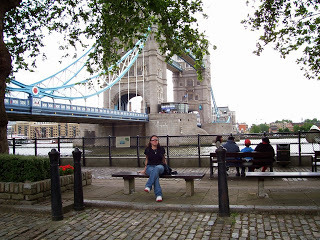
Riverside at the Tower
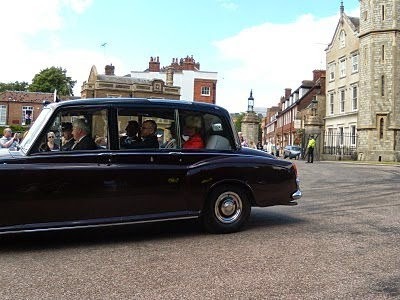
Catching a glimpse of the Queen at Windsor Castle with Victoria and Hester

In the back of an Edinburgh cab - we couldn't understand a word the cabbie said!
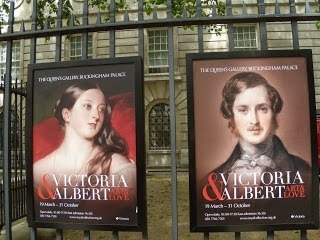
Viewing the Art and Love Exhibition with Victoria at the Queen's Gallery
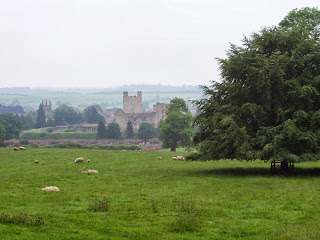
Bucolic splendour in the English countryside
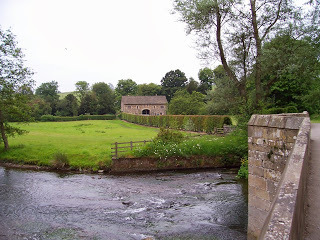
Touring the English countryside
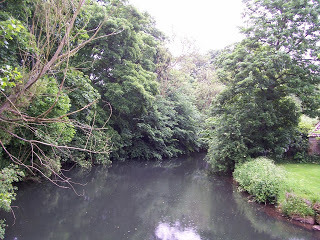
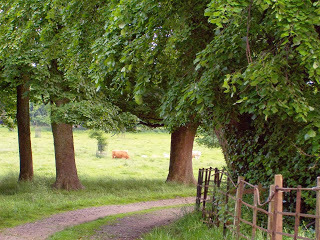
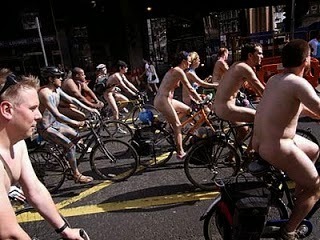
Victoria and I being treated to a view of the annual Naked Bike Ride whilst minding our own business at Apsley House
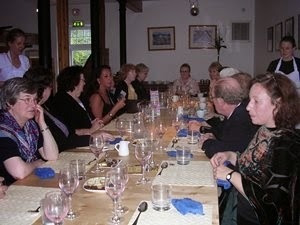
Dinner with our tour group on the Coaching Tour
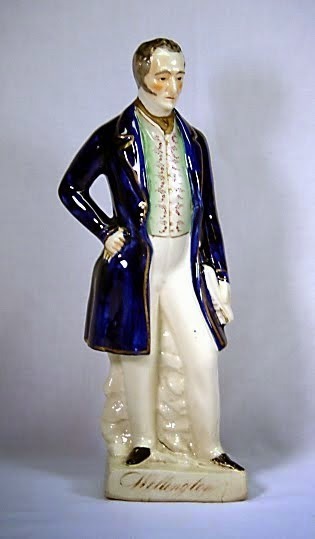
Finding this Staffordshire figurine of the Duke at a shop in Cecil Court
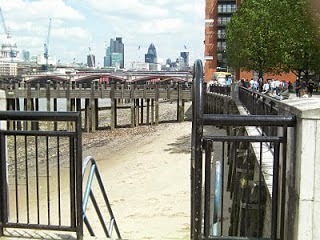
Mudlarking on the River Thames
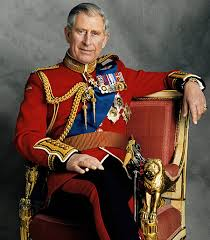
Unexpectedly coming face to face with Prince Charles wearing full dress uniform in the Mall. Really. He was wearing the uniform, not me.
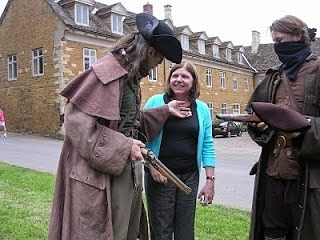
And what is one of my most treasured memories, highwaymen holding up author Diane Gaston at Belvoir Castle during the Coaching Tour. Diane has signed up for The Duke of Wellington Tour in September - we can't wait to start the journey and make new memories. Won't you join us and be a part of it all?
SPACE ON THE DUKE OF WELLINGTON TOUR IS LIMITED -RESERVE YOUR PLACE NOW!
Published on June 20, 2014 00:00
June 18, 2014
WATERLOO 1815

To mark the 199th Anniversary of the Battle of Waterloo, we've rounded up various ways to commemorate the day.
Watch the 50 minute Battlefield Detectives documentary that breaks down the Battle of Waterloo using cutting edge technology, expert research, historic documents and even weather reports. Fascinating stuff filmed on location.
Alternately, if you've only five minutes or so, you can watch All You Need to Know About Waterloo here - not bad despite the fact that they say in the introduction that the Battle took place on July 18.
Please sign the petition to save the Waterloo Battlefield located in the left hand sidebar of this blog.
Read a prior post on the harrowing experience Frederick Cavendish Ponsonby endured at the Battle of Waterloo: he was shot, stabbed, run over by charging cavalry horses, robbed and left for dead. Amazingly, he was rescued by a French officer and nursed back to health in Brussels by his mother, Lady Bessborough, who arrived shortly after the Battle with Freddy's sister, Lady Caroline Lamb. Incredible.
Read the story of Copenhagen, the horse ridden by the Duke of Wellington at Waterloo, here.
Visit the Waterloo200 website - the organization was formed to organize and coordinate events associated with the 200th anniversary of the Battle next year. Their sponsor is the current Duke of Wellington. Lot's of fab info, including the events planned around the Waterloo Despatch 2015.
If you're on Twitter, search #waterloo1815 throughout the day for real time Battle updates.
Read the story behind "Waterloo Teeth" here - not for the squeamish.
Read the story of Wellington's "Waterloo Breeches" here - quite amusing.
Find out what Kristine and Victoria saw at the re-enactment of the Battle of Waterloo in 2010 here.
Reserve your place on
THE DUKE OF WELLINGTON TOUR
DEADLINE IS JULY 4TH AND SPACE IS NOW LIMITED!
Published on June 18, 2014 00:00
June 16, 2014
ACKERMANN'S REPOSITORY FASHION INDEX
by Guest Blogger Jennifer JermantowiczVisit her website here.

As a writer of historical fiction, I am always looking for resources to improve the accuracy of the environment inhabited by my characters. The more details that I can include, the more immersive the world feels to my readers.During my search for descriptions of British Regency fashion, I read that prolific author Georgette Heyer often referred to her collection of ‘Ackermann’s Repository’. However, an intact copy of this regency periodical is difficult to find and expensive. Single fashion prints sometimes appear on eBay, but this is not enough for a comprehensive study.
 Half Dress, January 1812
Half Dress, January 1812With the advent of the internet, it’s much easier to track down unusual resources. Many organizations and libraries are scanning copyright free works, and placing them online. One of the best places to find these documents is the Internet Archive ( http://archive.org ), a non-profit digital library of cultural artifacts.
Thanks to the Philadelphia Museum of Art Library and support from the Lyrasis Members and Sloan Foundation, every single issue of Ackermann’s Repository from 1809 - 1829 is available for free download at the Internet Archive. Unfortunately, the archive is frustrating to navigate. To make research easier, I created an organized list with direct links to each issue of Ackermann’s Repository at the Internet Archive.
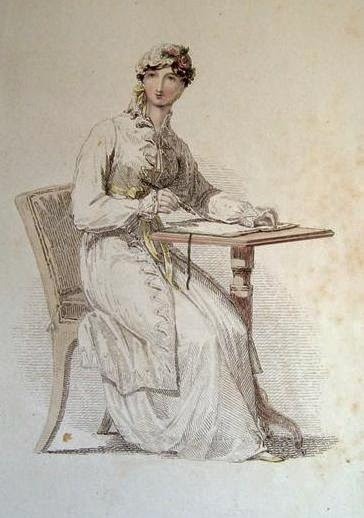 Morning Dress, 1813
Morning Dress, 1813I am delighted to share this resource from my blog ( http://pasaii.com/where-to-download-ackermanns-repository/ ) with the readers of Number One London. I hope that it helps many more writers and passionate researchers of this amazing period of British history.
 Head Dresses, 1814
Head Dresses, 1814Ackermann’s Repository at Archive.orgSeries 11809Vol 1 ( Jan – June )Vol 2 ( July – Dec )1810Vol 3 ( Jan – June )Vol 4 ( July – Dec )1811Vol 5 ( Jan – June )Vol 6 ( July – Dec )1812Vol 7 ( Jan – June )Vol 8 ( July – Dec )1813Vol 9 ( Jan – June )Vol 10 ( July – Dec )1814Vol 11 ( Jan – June )Vol 12 ( July – Dec )1815Vol 13 ( Jan – June )Vol 14 ( July – Dec )Series 21816Vol 1 ( Jan – June )Vol 2 ( July – Dec )1817Vol 3 ( Jan – June )Vol 4 ( July – Dec )1818Vol 5 ( Jan – June )Vol 6 ( July – Dec )1819Vol 7 ( Jan – June )Vol 8 ( July – Dec )1820Vol 9 ( Jan – June )Vol 10 ( July – Dec )1821Vol 11 ( Jan – June )Vol 12 ( July – Dec )1822Vol 13 ( Jan – June )Vol 14 ( July – Dec )Series 31823Vol 1 ( Jan – June )Vol 2 ( July – Dec )1824Vol 3 ( Jan – June )Vol 4 ( July – Dec )1825Vol 5 ( Jan – June )Vol 6 ( July – Dec )1826Vol 7 ( Jan – June )Vol 8 ( July – Dec )1827Vol 9 ( Jan – June )Vol 10 ( July – Dec )1828Vol 11 ( Jan – June )Vol 12 ( July – Dec )Fashion Prints from Victoria's Collection THANK YOU, JENNIFER!
Published on June 16, 2014 00:30
Kristine Hughes's Blog
- Kristine Hughes's profile
- 6 followers
Kristine Hughes isn't a Goodreads Author
(yet),
but they
do have a blog,
so here are some recent posts imported from
their feed.



